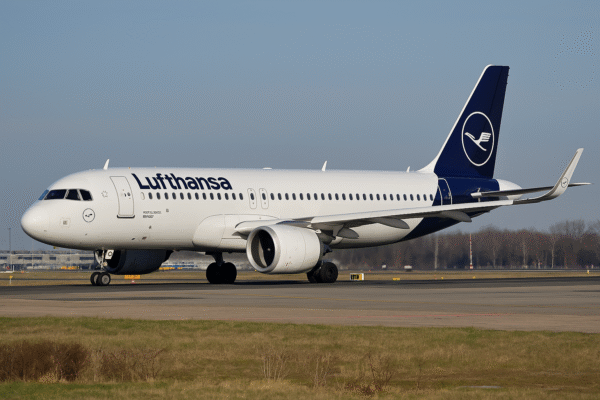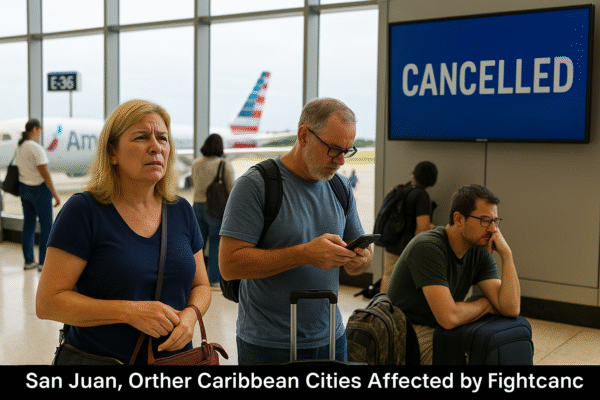Air travel across the Middle East experienced major setbacks as widespread delays and cancellations left thousands of passengers stranded. The crisis unfolded at King Abdulaziz International in Jeddah, Dubai International, King Khalid International in Riyadh, and Queen Alia International in Amman. Airlines including Saudia, Emirates, FlyDubai, and Royal Jordanian reported operational challenges that created a domino effect across the region’s busiest hubs.
The disruptions highlighted the fragile balance of air traffic in one of the world’s most important aviation corridors. With nine cancellations and more than one hundred delays in a single day, travelers faced uncertainty, long waits, and missed connections.
Numbers That Tell the Story
King Abdulaziz International Airport (Jeddah):
Jeddah registered five cancellations and eighteen delays. Saudia bore the brunt with five canceled flights and nine delays, straining its already packed schedule. Smaller airlines also suffered: Middle East Airlines saw 100% of its flights delayed, while Airblue and Malindo Air faced a 50% cancellation rate.
Dubai International Airport:
Dubai, ranked among the world’s busiest hubs, reported sixty-nine delays and one cancellation. Emirates logged twenty-eight delays, equal to about 5% of its daily operations. FlyDubai faced one cancellation and seventeen delays, while smaller carriers such as SpiceJet and Philippine Airlines struggled with delay rates reaching 40% and 100% respectively.
King Khalid International Airport (Riyadh):
Riyadh experienced thirteen delays and two cancellations. Saudia again featured prominently, with one canceled flight and seven delays. Airblue canceled half of its scheduled operations, and other carriers like Nile Air and Pakistan International Airlines recorded disruptions affecting up to half their daily flights.
Queen Alia International Airport (Amman):
Amman reported a smaller but notable impact. Royal Jordanian experienced one cancellation and one delay, a significant disruption for an airline with limited daily departures.
Airlines Under Pressure
Saudia:
Saudi Arabia’s flag carrier took the hardest hit, managing seven cancellations and over thirty delays across Jeddah and Riyadh. Travelers at both airports endured long queues, congested check-in counters, and last-minute rebookings.
Emirates:
Dubai’s flagship airline recorded the largest number of delays at its home base, with twenty-eight flights running late. While Emirates avoided large-scale cancellations, the delays rippled across its extensive global network, stranding passengers on multiple continents.
FlyDubai:
The low-cost airline reported one cancellation and thirty delays. Its budget-focused travelers, with fewer alternatives available, faced extended waits and confusion about rescheduling options.
Royal Jordanian:
The Jordanian national carrier saw fewer total disruptions but still suffered a high proportional impact. With one cancellation and one delay, entire regional connections were affected, underscoring the challenges faced by airlines with smaller fleets.
Impact on Passengers
Travelers endured hours of waiting in crowded terminals. Many missed onward connections as delays in Dubai and Jeddah cascaded into Europe, Asia, and North America. Confusion around rebooking added to the frustration, particularly for passengers traveling on smaller airlines with limited ground staff.
Check-in counters became overwhelmed, security lines grew longer, and boarding gates reached capacity as passengers waited without clear updates. For many, the ordeal served as a harsh reminder of how quickly air travel can unravel.
Broader Aviation Context
The Middle East has long positioned itself as a central hub for international travel. Dubai, Riyadh, and Jeddah airports serve millions of passengers each month, acting as transit gateways between Asia, Europe, Africa, and North America. Carriers like Emirates, Saudia, and Qatar Airways have built reputations for reliability and luxury.
Yet, the recent disruptions revealed vulnerabilities in this vast network. Operational congestion, air traffic bottlenecks, limited staffing, and possible weather-related factors combined to create a perfect storm. Even the most advanced airports struggled to maintain punctuality when multiple factors aligned against them.
Lessons for Travelers
The day of turmoil reinforced the need for flexibility in global travel. Travelers increasingly recognize that even the most advanced aviation systems remain susceptible to sudden breakdowns. Having backup plans, flexible tickets, and travel insurance can ease the stress of unexpected delays.
The events also signaled the importance of communication. Larger carriers like Emirates provided passengers with digital updates, but many smaller airlines lacked the resources to keep travelers informed, creating widespread frustration.
Looking Ahead
The cancellations and delays at Jeddah, Dubai, Riyadh, and Amman served as a wake-up call for Middle Eastern aviation. Airlines and airports must continue to refine turnaround strategies, strengthen staffing levels, and coordinate with regional air traffic control to prevent similar incidents.
For passengers, the disruptions proved that even in the heart of global aviation, delays and cancellations remain a reality. Thousands of travelers felt the impact of just nine cancellations and over a hundred delays, showing how tightly connected the global air travel network has become.
As air traffic in the region grows, Middle Eastern carriers will face mounting pressure to keep operations smooth. The day’s events may fade, but the lessons for airlines and passengers will remain clear: in the world of modern air travel, disruption is always just one busy day away.
For more travel news like this, keep reading Global Travel Wire


















